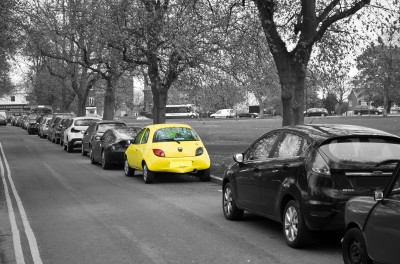“Alternative Driving” in Copenhagen: The Rise and Hiccups of Uber

Copenhagen.
There was a time when getting a taxi in Copenhagen on the eve of Christmas, the traditional date of celebration, was nigh impossible. A booking had to made weeks in advance, in some cases, months. To risk getting to a venue on December 24th and not have a ride home through the biting cold, even as the public transport system slept, was something residents took.
Then came a rivalling solvent, a solution to the dilemma: Uber. The evening of this December 24th, several Uber drivers were on hand in the Danish capital, drawn up on that multi-connected smorgasbord of an item known as the smartphone. In the world of hyper surveillance and monitoring, drivers and locations would be displayed, with your choice of driver duly selected.
They even come with a personalised dimension, the necessary touch for prospective customers. This particular driver boasted a name strikingly similar to the al-Nusra front in Syria, but this was not an occasion to joke. People just wanted to get home, and drivers not associated with the regular taxi market wanted to make earnings.
This is a company that became so large it is brushing past and pushing the competition out of regulated taxi markets. Venture capitalists continue salivating at its growth. Indeed, Uber seemed to be the ideal competitive model. But all models will at some point reach levels of stress, facing the specifics of local problems. The bigger the system, the greater the propensity to unfold.
Uber provides the classic example. Multinational experiments face local problems. A universal template has to yield to the specifics of locality. Precisely the seemingly loose nature of the Uber model, regulatory gurus are wondering how to rein in the driving company.
As are the anti-Uber groups which have sprung up, comprising such leading voices as Steve Wright who has argued that the company is a sinister entity, “backed by corporate titans like Goldman Sachs, and incur no tax liabilities in the UK” (The Independent, Jun 11, 2014). Besides, argues Wright, there is a safe system in operation as it is, competitive in nature and cost, comprising private hire vehicles and taxis.
Those sympathetic to Wright’s case cite safety examples, with a case of alleged rape of a passenger in New Delhi by an Uber driver last December. (The accused is currently standing trial over charges.) For all of that, James Cook, writing in Business Insider (Dec 8, 2014), argues that, “Uber remains one of the safest, if not the safest, ways to order a car.” The company monitors the cars used, the routes taken, and duly informs passenger of the route taken.
Then come the tax problems with the singular structure of the company, claiming that it is a tech entity which just takes fees for linking drivers and passengers. There are issues with those who work for Uber, thinking that there is an agency relationship between the company and the driver.
Uber has also made it into the publicity bad books with a spectacular demonstration of the profit motive in action. Just to show that the desire to make some ruddy cash does not diminish with a hostage siege, Uber made it to the front pages as it charged surging prices for individuals seeking to leave the Sydney central business district during the Lindt Café hold up. “One way to guarantee outrageously expensive Uber surge pricing? A hostage situation, apparently” (New York Magazine, Dec 15). An algorithm was deployed, raising prices to four times the standard rate as residents made a dash for it. The company went into placating overdrive: refunds were offered, and even free rides.
The problems posed by Uber’s push into various markets has been telling. In several European countries, Uber has faced operations clipping their influence. Bans against the use of the UberPOP service have been issued in Spain by judges, though these have been openly defied and challenged in court (The Straits Times, Dec 27, 2014). The regulators are pushing back, in some cases with a good degree of fury. In Portland, Oregon, Uber braved the local market by launching its operations without the approval of local officials. The response came in the form of threatened fines for both the company and its drivers.
The most recent instance of this is a cease and desist order from local government authorities in South Carolina, concerned that an Uber subsidiary, Raisier LLC, runs drivers without the appropriate credentials to be picking customers up and taking them to their destinations for money (The Verge, Jan 15). Since operating its UberX service in the state, regulators have been chewing over a classification regime for the company’s services, and those similar to it.
For all of these problems, the market for hired drivers, accessible at the touch of a booking app, is only getting larger. Uber’s not-so-saintly approach to making profits is bound to change as the regulators creep into the purses and incorporate this model of driver hire.
Those working in regulated, and in some cases closed taxi markets have already seen the threat manifest itself in an all too effective way. The rearguard actions are being mounted, though a mellowing is bound to take place. For all of that, one could still get a ride back in the cold Copenhagen night of Christmas Eve.
Dr. Binoy Kampmark was as Commonwealth Scholar at Selwyn College, Cambridge. He lectures at RMIT University, Melbourne. Email: [email protected]

